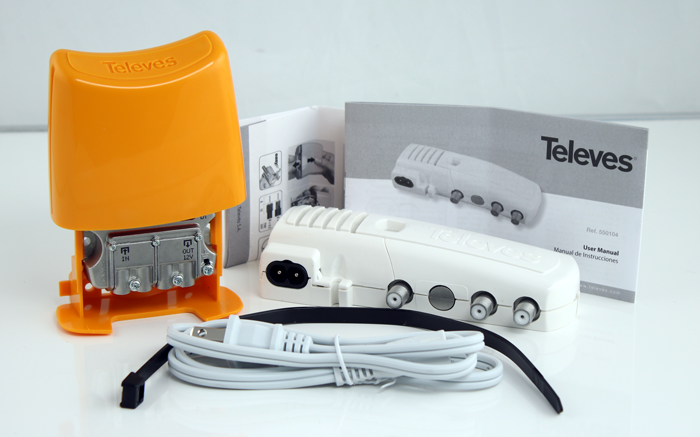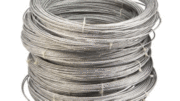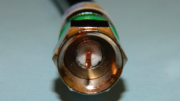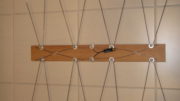Raw power. Smart design. Great price. Normally when you’re looking at a new home theater product, you can only pick two. According to Televes, those days are gone. They’ve supplied one of their new antenna amplifiers for us to test. Can it live up to the hype?
This document is available in PDF format! Get it now!
Introducing the new Televes Wideband Amplifier
The Televes 561381 is a compact wideband antenna that brings a lot to the table. It’s the simpler, easier version of the more expensive Televes mast amplifiers we’ve carried at Solid Signal for some time. Like the other Televes amps, it will power a Televes antenna. Like the other amps, it uses the Easy-F system. That’s where the similarities end.
Micro-sized
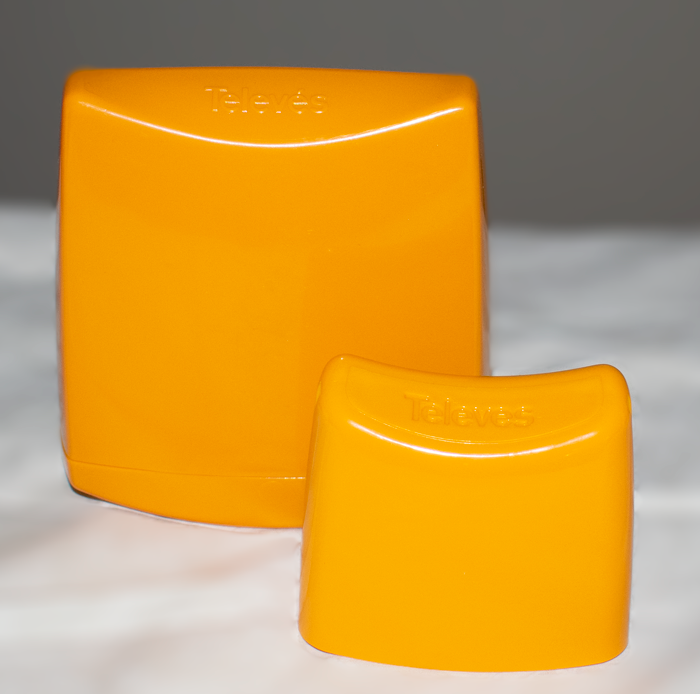
The back amplifier is our 3-input mast amplifier. The front one is the new wideband amplifier. It’s not much bigger than a deck of cards. I’m not sure size is really an issue with an amplifier, but at the same time it’s really neat that they can fit this much power into something this small.
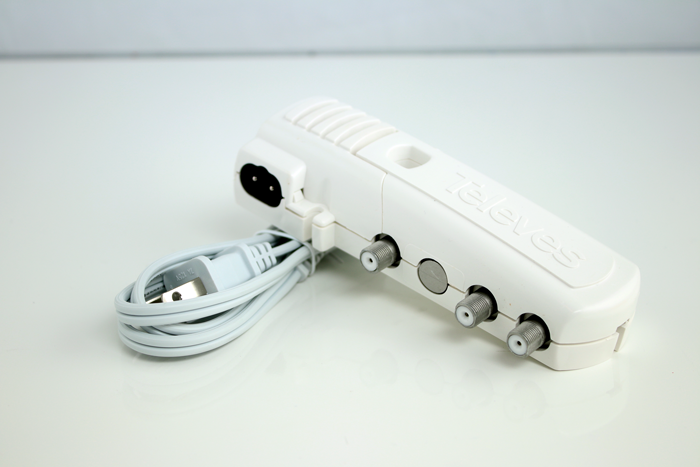
As you can see from the image above, you also get a power supply with built-in splitter. One line has higher gain so you can run to a distant TV, and the other is designed for the TV closest to the power supply. You also get an industrial-strength zip tie to connect the amplifier to the mast.
Overall, this is a high-quality piece. Televes manufactures practically everything from scratch and the result is that you see a level of finish that you normally only see on more expensive commercial equipment. The orange case is designed to repel water without the need for rubber seals that can break down. There simply isn’t any way for water to get into it unless it comes in from the bottom.
There’s also a full spec sheet in the box (which can be downloaded here.) Most antenna manufacturers don’t publish full specs. Televes operates its own antenna testing lab with the highest-quality measuring equipment available 24/7 so they can very easily provide real specs.
A closer look
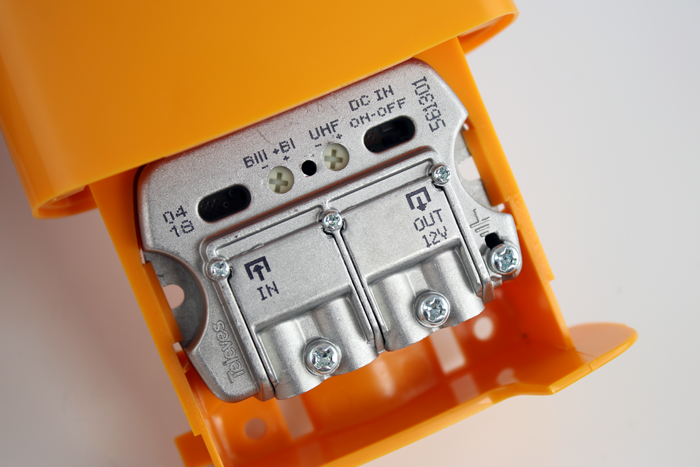
For being so small, this amplifier really brings the goods. It’s just packed with value. It features gain adjustment for VHF and UHF separately (the VHF is labeled BIII+BI, which are the European designations) as well as a switch which enables or disables DC power to the antenna. This is useful if you’re using a Televes antenna or any other amplified antenna and the combination of both is just too strong.
You also get ports for the Easy-F connection system and a ground screw. As with everything on your roof, it should be grounded. You can use a ground block between the power supply and amplifier or connect a ground wire straight to the amp.
It should be noted that this amplifier lacks two features of the other amps. It does not filter LTE signals and does not pass signal when unpowered. None of the other amplifiers in its price range have these features either.
Connecting the amplifier
Because the amplifier is powered from inside, we strongly recommend using solid copper center conductor cable like our Solid Signal custom-made cable. Using home-store cable may work, but it could lead to a loss of current at the amplifier which would make the amp less effective.
The amplifier uses the “Easy-F” connection system that eliminates the need to add a connector at the end of the cable. It also increases signal strength because there’s no insertion loss due to a connector. It’s incredibly easy.
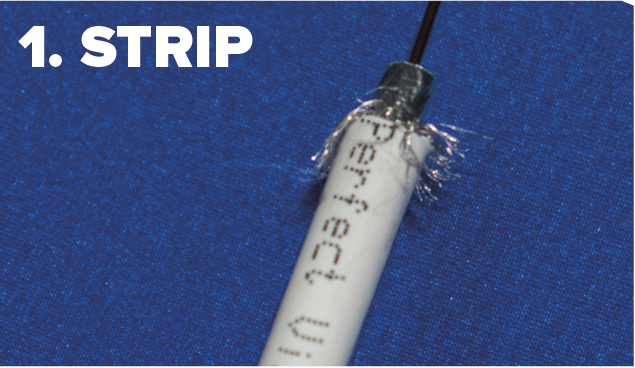
Starting with bare cable, strip away the dielectric and braid. Fold the braid back. If you need a cable stripper, this one from Televes is really perfect for this. If you don’t need something this fancy, a jackknife and some careful work can do the same thing.
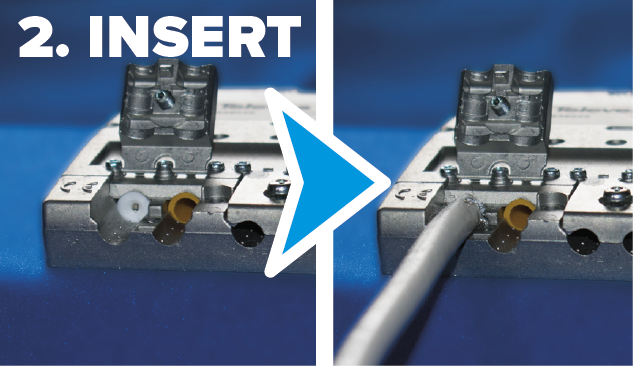
Open up the hatch and shove the cable in.
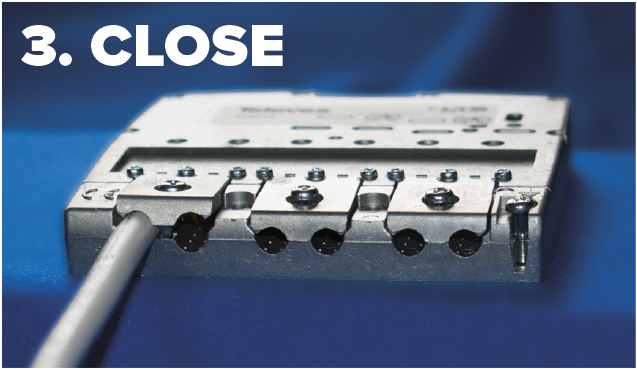
Close the hatch and screw it down tight. This will keep the cable in place and provide a strong connection.
If you need more of a tutorial, check out this PDF or this video.
With the connections in place, close and snap down the top cover and use the included zip tie to attach it to the mast. Don’t forget to ground! If you forgot to ground or need to open up the amp for any reason, a quick squeeze on the sides will let you open it up again.
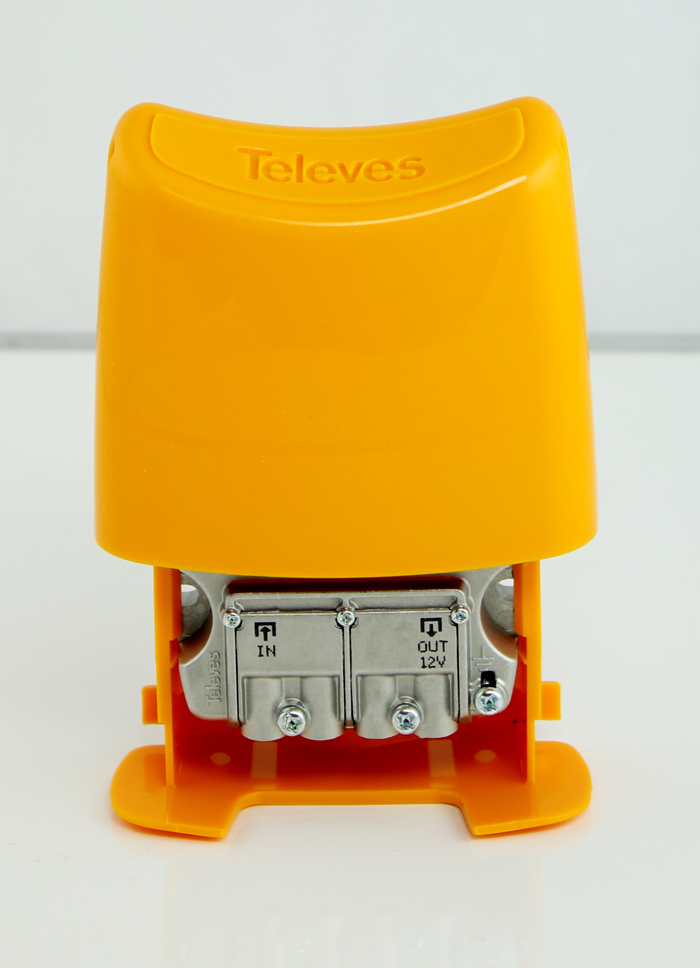
Yeah, but does it work?
This amplifier is rated for a maximum amplification of 30dB. It has a 1.5dB noise figure in VHF and 3.5dB noise figure in UHF, according to published specs. Those numbers seem kind of high, so I decided to put the amplifier to the test. Lacking the kind of complex gear it takes to properly measure noise figure I decided that the closes I could come was a comparison of signal-to-noise ratio. I’ll explain that shortly.
Testing methods
The tests were conducted at our Southern California testing facility at a distance of roughly 60 miles from Mount Wilson, where most broadcast towers are. All measurement was done on the same day under clear weather conditions.
The antenna used for testing was an Antennas Direct Clearstream 2Max. A Televes antenna was not used because the pass-through power for the amplifier would have given an unfair advantage.
As much as possible, the same cables were used to eliminate any bias from having different quality connectors. Results were recorded with a Televes H45 spectrum analyzer.
Initial measurements
Initial measurements were taken with an FF-10-B barrel in place of the amplifier so that the same cables could be used. Results were recorded and stored for reference.
Competing amplifier
I chose to test this amplifier against a well-known competitor that claims to provide 20dB of amplification and a noise figure lower than 1dB. The barrel connector was removed and the amplifier, which uses F-connectors not the Easy-F system, was put in place. Results were again recorded and stored for reference.
Televes amplifier
Using the same cables, the ends were cut off so that they could be used with the Easy-F connection system of the Televes amp. Results were then recorded and all three sets of data were compared. Only the results common to all three tests were included in comparison. For example, the Televes amp allowed for four channels to be received that could not be received without an amplifier. Those results were stored but not used for comparison.
Raw Gain comparison
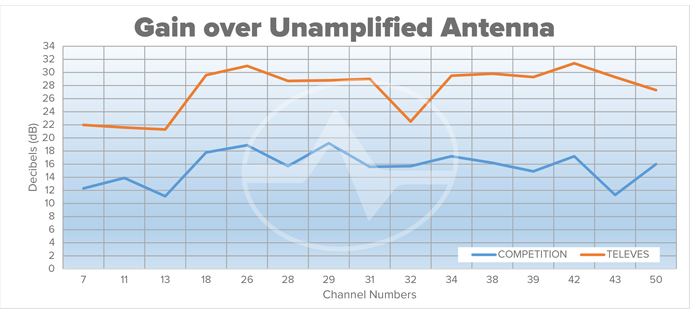
In real world testing, it’s clear to see that the Televes amplifier does in fact come close to its rated level of 30dB in a typical installation. The other amplifier does approach 20dB in some spots but does not ever actually get to that level.
The competitor amp has an average gain of 15.53dB, while the Televes amp has an average gain of 27.41dB. The 14dB difference represents roughly a 2,500% increase in signal getting to your television.
Signal-to-Noise ratio comparison
Raw power isn’t really the best measurement of how well you’ll get a station. The best representation is signal-to-noise ratio. With digital signals, signal level is only important to the extent that you have enough of it. More isn’t going to help you, as long as it’s not too weak to travel over a line.
Carrier-to-noise ratio is the raw measurement of the antenna signal over the line compared to the noise and is somewhat useful, but it isn’t the best measurement. I’ve said before that signal-to-noise ratio is the best choice for measuring antenna performance because in order to get it, the signal is actually tuned like it would be on your TV and then compared to the noise in the line.
When you add an amplifier, the carrier-to-noise ratio will go up fairly dramatically but it’s normal to expect the signal-to-noise ratio to remain fairly stable in channels that are received without an amplifier. This is what I saw in this test as well. When amplified, I saw an increase in CNR up to 12dB with the competitor amp and up to 18dB in the Televes amp. However the SNR charts tell the real story.
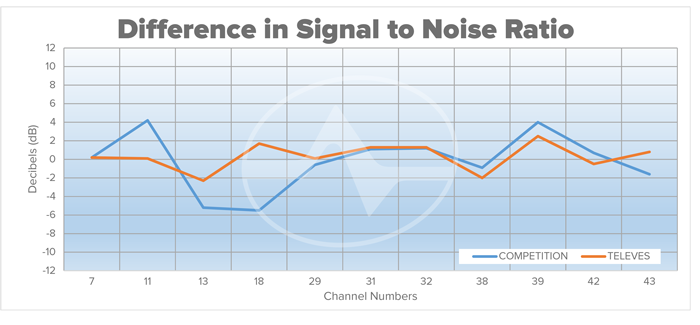
For the most part the SNR doesn’t change more than 2dB one direction or the other, and this is a minor change that could be attributed to randomness in testing. For example a little more sunlight or a slight breeze could cause these numbers to fluctuate that much.
This chart doesn’t show channels which couldn’t be tested without an amplifier, so it doesn’t show the whole story. The Televes amplifier allowed for four more channels to come in, channels which didn’t show up on the SNR plots from the unamplified antenna.
However, there is a troublesome dip in the competitor amp in channels 13 and 18. Here we see that SNR actually drops by 6dB when the amp is in place. That means in theory that those channels are actually worse when the amp is in place. The difference could mean that you don’t get those channels sometimes.
Obviously you don’t ever want a scenario where an amplifier makes things worse. Sometimes this is caused by overamplification, but we see in the top chart that there isn’t as much amplification in those channels as in other channels. They’re all broadcasting from the same location, too.
The only conclusion I could draw is that the competitor’s amp actually introduced more noise at those frequencies, and that’s not good.
Conclusions
Looking at several pre-amplifiers in the sub-$100 price range, you see a wide variety of designs and capabilities. However, in this test the Televes wideband amp performed similarly to much more expensive competitors and provided a more stable signal-to-noise number, which is the most important. It’s a great performer and a great value. Most importantly it’s available now at Solid Signal.

